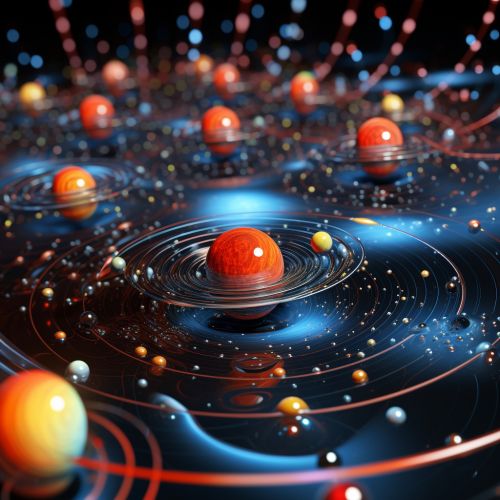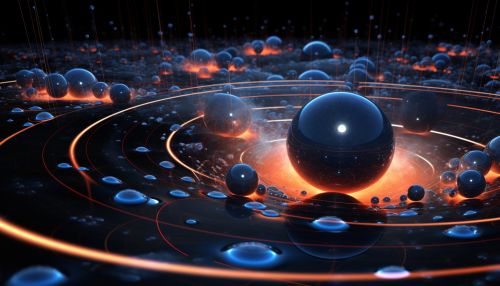Anyons
Introduction
Anyons are a type of quasiparticle that occur only in two-dimensional systems, with properties much less restrictive than fermions and bosons. The term "anyon" was coined by physicist Frank Wilczek in 1982, deriving from the word "any" due to the particles' unusual ability to assume any phase between the two extremes of bosons and fermions.


Quantum Statistics of Anyons
In quantum mechanics, particles are classified according to their statistics - a set of mathematical rules that describe how multiple identical particles can occupy the same quantum state. Fermions obey the Pauli exclusion principle, which states that no two fermions can occupy the same quantum state simultaneously. Bosons, on the other hand, can occupy the same quantum state, leading to phenomena such as Bose-Einstein condensation.
Anyons, however, do not fit neatly into either of these categories. Instead, they exhibit properties that are intermediate between fermions and bosons. This is due to the fact that anyons exist in two dimensions, where the spatial arrangements of particles can be more complex than in three dimensions. When anyons are exchanged, or "braided", the quantum state of the system changes in a way that depends on the winding path taken by the particles. This property is unique to anyons and is the basis for their potential use in quantum computing.
Anyonic Models
There are two primary models of anyons: Abelian and non-Abelian. Abelian anyons, named after the mathematician Niels Henrik Abel, are the simpler of the two. When two Abelian anyons are exchanged, the quantum state of the system acquires a phase factor, but the absolute values of the quantum amplitudes do not change.
Non-Abelian anyons are more complex. When two non-Abelian anyons are exchanged, the quantum state of the system can transform into a completely different state. This property makes non-Abelian anyons of particular interest for quantum computing, as it allows for the creation of robust quantum bits, or qubits, that are resistant to decoherence.
Anyons and Quantum Computing
The unusual properties of anyons make them a promising candidate for use in quantum computing. In particular, the ability of non-Abelian anyons to maintain quantum information in a topologically protected state could lead to the development of fault-tolerant quantum computers.
In a quantum computer based on anyons, information would be stored in the braiding patterns of the anyons. This is fundamentally different from traditional quantum computing, which relies on the manipulation of qubits. Because the information is stored in the braiding patterns, it is resistant to local perturbations, making anyonic quantum computers potentially more robust than their qubit-based counterparts.
Experimental Observations
Despite the theoretical interest in anyons, experimental observation of these particles has been challenging. However, there have been several promising experiments in recent years.
In 2020, a team of researchers at Microsoft's Quantum lab published a paper in the journal Nature claiming to have found evidence of a type of non-Abelian anyon known as a Majorana fermion. The researchers observed a signal that is consistent with the theoretical predictions of Majorana fermions, although further experiments are needed to confirm these findings.
Conclusion
Anyons represent a fascinating area of quantum physics, with potential applications in the field of quantum computing. While experimental confirmation of anyons remains elusive, the theoretical framework is well-established and continues to be an active area of research.
